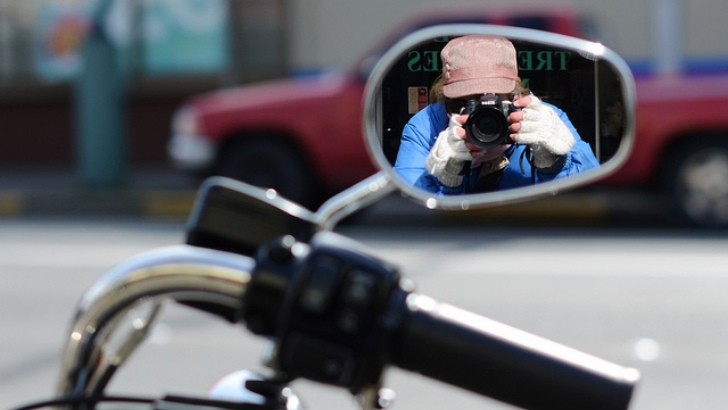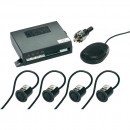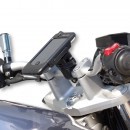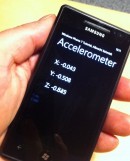What you’re about to read is a short imagination-based story which could just make it into a real product one day. I am not sure whether someone has even applied for a patent on such an idea or not. If it turns out that I am the first guy who ever thought about this, then lucky me; if not, at least I’m telling a nice story.
For starters, I’d have to mention that such high-tech motorcycle mirrors are only useful for those riders who change their stance while they are out on two wheels. I’ve met people who were stiff and rigid while they were riding, to the point that I was wondering how these guys could actually turn. For them, self-adjusting mirrors (SAMs) are a non-issue, as it will not make any change in their riding. For the rest of the fellows, however, these futuristic mirrors could be one of the “how come I didn’t think of this before” add-ons.
Some laughed and recommended getting a more comfy bike, but honestly, it’s kind of impossible to find a bike that does both on and off, trail and highway, aggressive twisties and luggage hauling than the 990 Adventure. Still, the nature of the bike is definitely not the center issue here, as pretty much every butt out there is becoming sore after some 6 hours of continuous riding and only short refueling breaks.
A Czech guy I rode with once taught me a neat trick to help reduce the numbness in my hind zones. He used to stand for a while every 40 km (25 miles) or so, stretching his legs, flexing, bending and all. He would then sit again, trying to find the sweet spot for another “stage”.
I followed his advice and the trick works, allowing me to ride in more comfort, even though at the end of the day I’d lie if I said my buttocks weren’t hurting. Still, the trick works, and for people riding bikes on footpegs they can actually stand on, this is definitely a decent way to reduce fatigue.
Still, while standing, I can no longer see what’s going on behind me, and frankly, this doesn’t feel exactly right. I have to do shoulder checks every now and then, making sure everything’s alright. Some said to me that while riding standing, it’s impossible for other motorists to miss me, especially as I am 1.86m (6’1”) tall and ride a bike that’s already tall. While I tend to believe them, I’d still not trust this alone and prefer not to leave verifying this truth to the goddess Fortuna.
The same goes for sport bike riders, who are trying to shrink as much as possible behind their bikes’ bubbles… and while doing this, they seem to see in their mirrors the same amount of road like I do: none!
This could be achieved with two small motors installed in the mirrors, linked to a small central unit which also receives feeds from some sensors. In case this sounds a bit too Star Trek, believe me it’s not. I am no programmer or engineer (I am a sociologist, in fact) but the technology is already out there, within our grasp.
We almost have everything we need
We’ve got fancy parking sensors which can approximate distance to an object with various degrees of accuracy, some even capable to deliver precision which goes under 1 centimeter (roughly half an inch). Then we’ve also got miniature accelerometers which fit in the skimpy room a mobile phone can offer, and their precision is becoming better with each generation.
Smartphones are so powerful nowadays that they can in fact process amounts of data which common people can’t even fathom, and apps which can perform complex tasks are no longer first-page news. We could even ditch the separate control unit in favor of a smartphone, and going fully digital, saving up space and weight on the bike and making installing SAMs a breeze on countless models.
Can you imagine simply screwing in place your new self-adjusting mirrors, connecting their small, unobtrusive power cords to the bike’s central harness, and then picking up your phone to make the necessary adjustments, just the way you would when you get in the driver’s seat of a new car? And then imagine that the perfect sight in your mirror will endure even if you move around on the bike, cowing up on the Ninja or riding standing on your Super Tenere… or whatever other bike!
You could even save this setting as a preset. If you happen to use different saddles, AirHawk or other similar devices, or if more people will use the bike, presets come in quite handy. If you have riding buddies and use to swap bikes, adjusting the mirrors on the other bike will only take 1 second after pairing your phone with the bike and you’re just as good to go as if you ride your two-wheeler.
A small array of sensors installed on the bike would detect your helmet’s position in space relative to the bike and quickly triangulate a decent approximation. Say, we could have a sensor in or on top of the dashboard, and two in the mirrors themselves. And the system could be even improved with the addition of an accelerometer and transponder to your helmet, providing a new layer of positional data as to the head tilt or banking.
Extensive testing would in the end reveal which angles can be associated with the need to alter the position of the mirrors in order to maintain the perfect sight, and of course, a locking function could be used to stop the system from making continuous alterations when the rider’s movement does not exceed a specific margin.
The SAMs could be manufactured with dimensions and weight specs really close to those of casual motorcycle mirrors, and thus not adding much bulk to the bikes. Styling will again be rather permissive, allowing riders to choose the self-adjusting mirrors that suit their machines best.
Much of the technological solutions are already at hand and programming and some testing to refine and implement them is all that’s needed, plus some industrial work design to make things look good. This means that the price for a pair of Self-Adjusting Mirrors could also be a fairly low one, maybe not as cheap as a pair of good heated grips, but not costing a small fortune either.
Honestly, I hope someone picks this one up. And credit me, too.
Change the riding position – lose the ideal line of sight
I ride an enduro-touring machine which isn’t exceedingly comfortable. I promised myself I would go once more through all the classic seat enhancements, from Butt Buffers to Airhawk, and from various sorts of gel cushions to sheepskin covers. That is, because my rear starts hurting after several hours at the helm.Some laughed and recommended getting a more comfy bike, but honestly, it’s kind of impossible to find a bike that does both on and off, trail and highway, aggressive twisties and luggage hauling than the 990 Adventure. Still, the nature of the bike is definitely not the center issue here, as pretty much every butt out there is becoming sore after some 6 hours of continuous riding and only short refueling breaks.
A Czech guy I rode with once taught me a neat trick to help reduce the numbness in my hind zones. He used to stand for a while every 40 km (25 miles) or so, stretching his legs, flexing, bending and all. He would then sit again, trying to find the sweet spot for another “stage”.
I followed his advice and the trick works, allowing me to ride in more comfort, even though at the end of the day I’d lie if I said my buttocks weren’t hurting. Still, the trick works, and for people riding bikes on footpegs they can actually stand on, this is definitely a decent way to reduce fatigue.
Still, while standing, I can no longer see what’s going on behind me, and frankly, this doesn’t feel exactly right. I have to do shoulder checks every now and then, making sure everything’s alright. Some said to me that while riding standing, it’s impossible for other motorists to miss me, especially as I am 1.86m (6’1”) tall and ride a bike that’s already tall. While I tend to believe them, I’d still not trust this alone and prefer not to leave verifying this truth to the goddess Fortuna.
The same goes for sport bike riders, who are trying to shrink as much as possible behind their bikes’ bubbles… and while doing this, they seem to see in their mirrors the same amount of road like I do: none!
Solutions?
So this brings us to the heart of the problem and the (only partially) dreamy solution for this. During one of my latest trips, I started to think about how cool self-adjusting mirrors would be for almost every rider. Imagine yourself standing on your travel bike and the mirrors quickly rotating in such a manner that you’d have perfect sight just as when you were standing. Cool magic, huh?This could be achieved with two small motors installed in the mirrors, linked to a small central unit which also receives feeds from some sensors. In case this sounds a bit too Star Trek, believe me it’s not. I am no programmer or engineer (I am a sociologist, in fact) but the technology is already out there, within our grasp.
We almost have everything we need
We’ve got fancy parking sensors which can approximate distance to an object with various degrees of accuracy, some even capable to deliver precision which goes under 1 centimeter (roughly half an inch). Then we’ve also got miniature accelerometers which fit in the skimpy room a mobile phone can offer, and their precision is becoming better with each generation.
Smartphones are so powerful nowadays that they can in fact process amounts of data which common people can’t even fathom, and apps which can perform complex tasks are no longer first-page news. We could even ditch the separate control unit in favor of a smartphone, and going fully digital, saving up space and weight on the bike and making installing SAMs a breeze on countless models.
Can you imagine simply screwing in place your new self-adjusting mirrors, connecting their small, unobtrusive power cords to the bike’s central harness, and then picking up your phone to make the necessary adjustments, just the way you would when you get in the driver’s seat of a new car? And then imagine that the perfect sight in your mirror will endure even if you move around on the bike, cowing up on the Ninja or riding standing on your Super Tenere… or whatever other bike!
Simple principles deliver awesome results
As I mentioned above, the system would need to be calibrated first. You could get on the bike, keep it upright in the parking lot or driveway, and adjust each mirror so that it offers the best sight possible. This could also be done on your very smartphone, not unlike the method used to replicate game controllers… which is already well-implemented.You could even save this setting as a preset. If you happen to use different saddles, AirHawk or other similar devices, or if more people will use the bike, presets come in quite handy. If you have riding buddies and use to swap bikes, adjusting the mirrors on the other bike will only take 1 second after pairing your phone with the bike and you’re just as good to go as if you ride your two-wheeler.
A small array of sensors installed on the bike would detect your helmet’s position in space relative to the bike and quickly triangulate a decent approximation. Say, we could have a sensor in or on top of the dashboard, and two in the mirrors themselves. And the system could be even improved with the addition of an accelerometer and transponder to your helmet, providing a new layer of positional data as to the head tilt or banking.
Extensive testing would in the end reveal which angles can be associated with the need to alter the position of the mirrors in order to maintain the perfect sight, and of course, a locking function could be used to stop the system from making continuous alterations when the rider’s movement does not exceed a specific margin.
The SAMs could be manufactured with dimensions and weight specs really close to those of casual motorcycle mirrors, and thus not adding much bulk to the bikes. Styling will again be rather permissive, allowing riders to choose the self-adjusting mirrors that suit their machines best.
Much of the technological solutions are already at hand and programming and some testing to refine and implement them is all that’s needed, plus some industrial work design to make things look good. This means that the price for a pair of Self-Adjusting Mirrors could also be a fairly low one, maybe not as cheap as a pair of good heated grips, but not costing a small fortune either.
Honestly, I hope someone picks this one up. And credit me, too.










